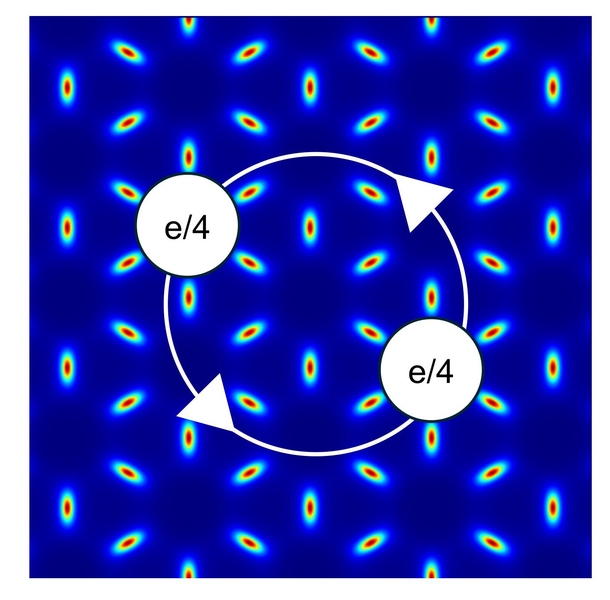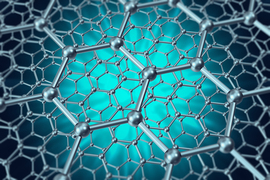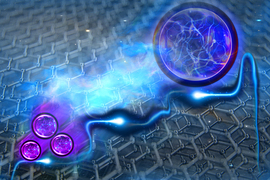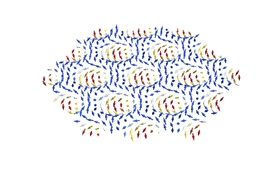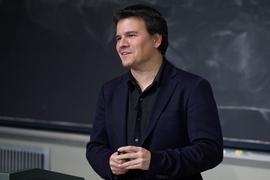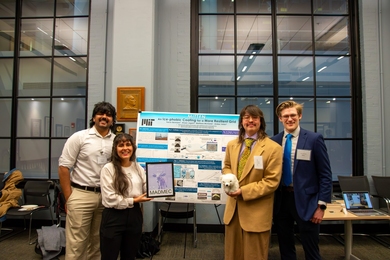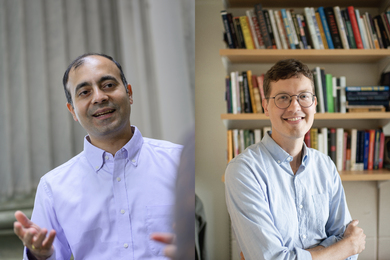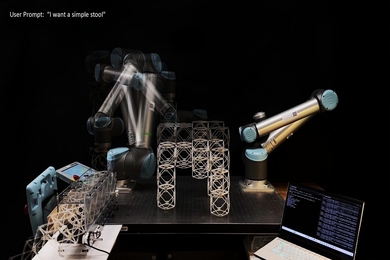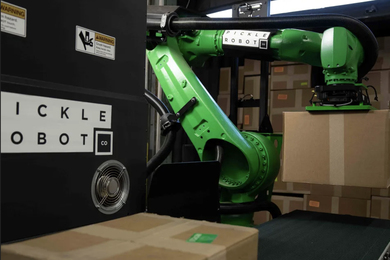MIT physicists have shown that it should be possible to create an exotic form of matter that could be manipulated to form the qubit (quantum bit) building blocks of future quantum computers that are even more powerful than the quantum computers in development today.
The work builds on a discovery last year of materials that host electrons that can split into fractions of themselves but, importantly, can do so without the application of a magnetic field.
The general phenomenon of electron fractionalization was first discovered in 1982 and resulted in a Nobel Prize. That work, however, required the application of a magnetic field. The ability to create the fractionalized electrons without a magnetic field opens new possibilities for basic research and makes the materials hosting them more useful for applications.
When electrons split into fractions of themselves, those fractions are known as anyons. Anyons come in variety of flavors, or classes. The anyons discovered in the 2023 materials are known as Abelian anyons. Now, in a paper reported in the Oct. 17 issue of Physical Review Letters, the MIT team notes that it should be possible to create the most exotic class of anyons, non-Abelian anyons.
“Non-Abelian anyons have the bewildering capacity of ‘remembering’ their spacetime trajectories; this memory effect can be useful for quantum computing,” says Liang Fu, a professor in MIT’s Department of Physics and leader of the work.
Fu further notes that “the 2023 experiments on electron fractionalization greatly exceeded theoretical expectations. My takeaway is that we theorists should be bolder.”
Fu is also affiliated with the MIT Materials Research Laboratory. His colleagues on the current work are graduate students Aidan P. Reddy and Nisarga Paul, and postdoc Ahmed Abouelkomsan, all of the MIT Department of Phsyics. Reddy and Paul are co-first authors of the Physical Review Letters paper.
The MIT work and two related studies were also featured in an Oct. 17 story in Physics Magazine. “If this prediction is confirmed experimentally, it could lead to more reliable quantum computers that can execute a wider range of tasks … Theorists have already devised ways to harness non-Abelian states as workable qubits and manipulate the excitations of these states to enable robust quantum computation,” writes Ryan Wilkinson.
The current work was guided by recent advances in 2D materials, or those consisting of only one or a few layers of atoms. “The whole world of two-dimensional materials is very interesting because you can stack them and twist them, and sort of play Legos with them to get all sorts of cool sandwich structures with unusual properties,” says Paul. Those sandwich structures, in turn, are called moiré materials.
Anyons can only form in two-dimensional materials. Could they form in moiré materials? The 2023 experiments were the first to show that they can. Soon afterwards, a group led by Long Ju, an MIT assistant professor of physics, reported evidence of anyons in another moiré material. (Fu and Reddy were also involved in the Ju work.)
In the current work, the physicists showed that it should be possible to create non-Abelian anyons in a moiré material composed of atomically thin layers of molybdenum ditelluride. Says Paul, “moiré materials have already revealed fascinating phases of matter in recent years, and our work shows that non-Abelian phases could be added to the list.”
Adds Reddy, “our work shows that when electrons are added at a density of 3/2 or 5/2 per unit cell, they can organize into an intriguing quantum state that hosts non-Abelian anyons.”
The work was exciting, says Reddy, in part because “oftentimes there’s subtlety in interpreting your results and what they are actually telling you. So it was fun to think through our arguments” in support of non-Abelian anyons.
Says Paul, “this project ranged from really concrete numerical calculations to pretty abstract theory and connected the two. I learned a lot from my collaborators about some very interesting topics.”
This work was supported by the U.S. Air Force Office of Scientific Research. The authors also acknowledge the MIT SuperCloud and Lincoln Laboratory Supercomputing Center, the Kavli Institute for Theoretical Physics, the Knut and Alice Wallenberg Foundation, and the Simons Foundation.
